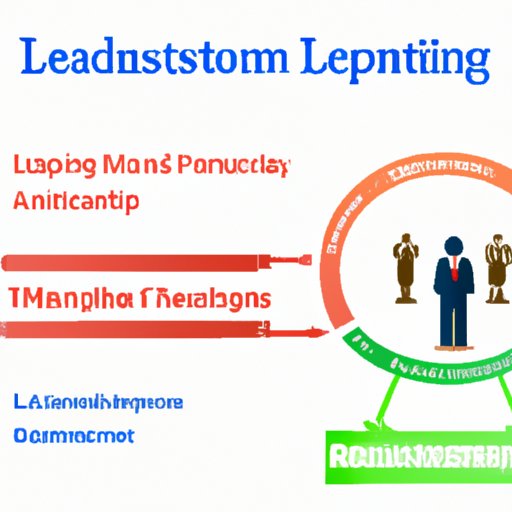Introduction
Transactional leadership is a style of leadership that focuses on goal-setting, motivation, and rewards. It is based on a simple exchange between leaders and followers: the leader sets clear expectations and rewards those who meet them. This type of leadership is often used in corporate settings, where it can be effective in driving performance and increasing productivity. In this article, we will explore what transactional leadership is, how it works, and how it can be applied in the workplace.
Understanding Transactional Leadership
What Makes it Effective?
At its core, transactional leadership is based on a system of rewards and punishments. Leaders set clear expectations for their followers and provide incentives for meeting them. When expectations are met, followers are rewarded with recognition, praise, or other forms of reward. If expectations are not met, they are punished through disciplinary action or other forms of punishment. This system of rewards and punishments helps to motivate followers to achieve their goals, as well as encourages them to stay on track and remain productive.
Characteristics of Transactional Leaders
Transactional leaders are typically organized, task-oriented individuals who focus on achieving results. They are usually good communicators who are able to clearly articulate expectations and provide feedback on performance. They also have strong problem-solving skills and are able to quickly identify issues and find solutions. Additionally, transactional leaders are often highly organized, with a strong attention to detail, and are able to delegate tasks and responsibilities effectively.

Fostering a Culture of Transactional Leadership
Strategies for Establishing a Transactional Leadership Model
In order to foster a culture of transactional leadership, organizations must first establish a system of rewards and punishments. This can be done by setting clear expectations for employees and providing incentives for meeting them. Additionally, organizations should create a system of accountability, such as performance reviews, to ensure expectations are being met. Organizations should also provide regular feedback to employees so they know how they are performing relative to expectations.
Examples of Successful Organizations Utilizing Transactional Leadership
Transactional leadership has been successfully used by many organizations, including Apple, Microsoft, and IBM. These companies have established systems of rewards and punishments that help to motivate employees and keep them on track. Additionally, these organizations have created systems of accountability, such as performance reviews, to ensure expectations are being met. As a result, these companies have seen success in terms of increased productivity and performance.
Applying Transactional Leadership in the Workplace
Strategies for Long-Term Success
When implementing a transactional leadership model in the workplace, it is important to ensure that the system is fair and consistent. Leaders should strive to communicate expectations clearly and regularly, and provide feedback on performance. Additionally, it is important to set achievable goals and provide meaningful rewards for meeting them. Finally, it is essential to create a culture of trust and respect, where employees feel valued and appreciated.
Ways to Encourage Employee Buy-In and Engagement
In order to ensure employees are engaged and motivated under a transactional leadership system, it is important to create an environment where they feel valued and appreciated. Leaders should strive to recognize and reward employees for their efforts, as well as provide feedback and opportunities for growth. Additionally, leaders should create a sense of ownership by involving employees in decision-making processes and allowing them to take initiative. Finally, leaders should provide meaningful incentives, such as bonuses or promotions, for meeting expectations.

Comparing and Contrasting Transactional Leadership with Other Styles of Leadership
Examining Transformational Leadership
Transformational leadership is a style of leadership that focuses on inspiring and motivating followers. Unlike transactional leadership, which relies on rewards and punishments, transformational leadership encourages followers to strive for higher goals and reach their potential. Transformational leaders inspire followers by setting an example and providing guidance, rather than relying on rewards and punishments. Additionally, transformational leaders focus on developing relationships with followers, while transactional leaders focus on tasks and results.
Exploring Charismatic Leadership
Charismatic leadership is a style of leadership that focuses on creating an emotional connection with followers. Charismatic leaders use their charisma and charm to inspire and motivate followers. Unlike transactional leadership, which relies on rewards and punishments, charismatic leadership relies on the power of the leader’s personality. Additionally, charismatic leaders focus on creating an emotional bond with followers, while transactional leaders focus on tasks and results.
Conclusion
Summarizing the Benefits of Transactional Leadership
Transactional leadership is an effective style of leadership that focuses on goal-setting, motivation, and rewards. It is based on a simple exchange between leaders and followers: the leader sets clear expectations and rewards those who meet them. This type of leadership is often used in corporate settings, where it can be effective in driving performance and increasing productivity. In addition, it can be used to foster a culture of trust and respect, where employees feel valued and appreciated.
Closing Thoughts
Transactional leadership is an effective way to motivate and engage employees. It is based on a system of rewards and punishments, which helps to drive performance and increase productivity. Additionally, it can be used to foster a culture of trust and respect, where employees feel valued and appreciated. By understanding the key characteristics of transactional leadership and applying it in the workplace, organizations can reap the benefits of this powerful style of leadership.
(Note: Is this article not meeting your expectations? Do you have knowledge or insights to share? Unlock new opportunities and expand your reach by joining our authors team. Click Registration to join us and share your expertise with our readers.)
